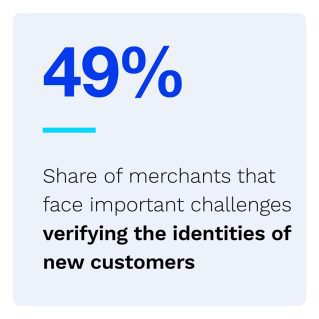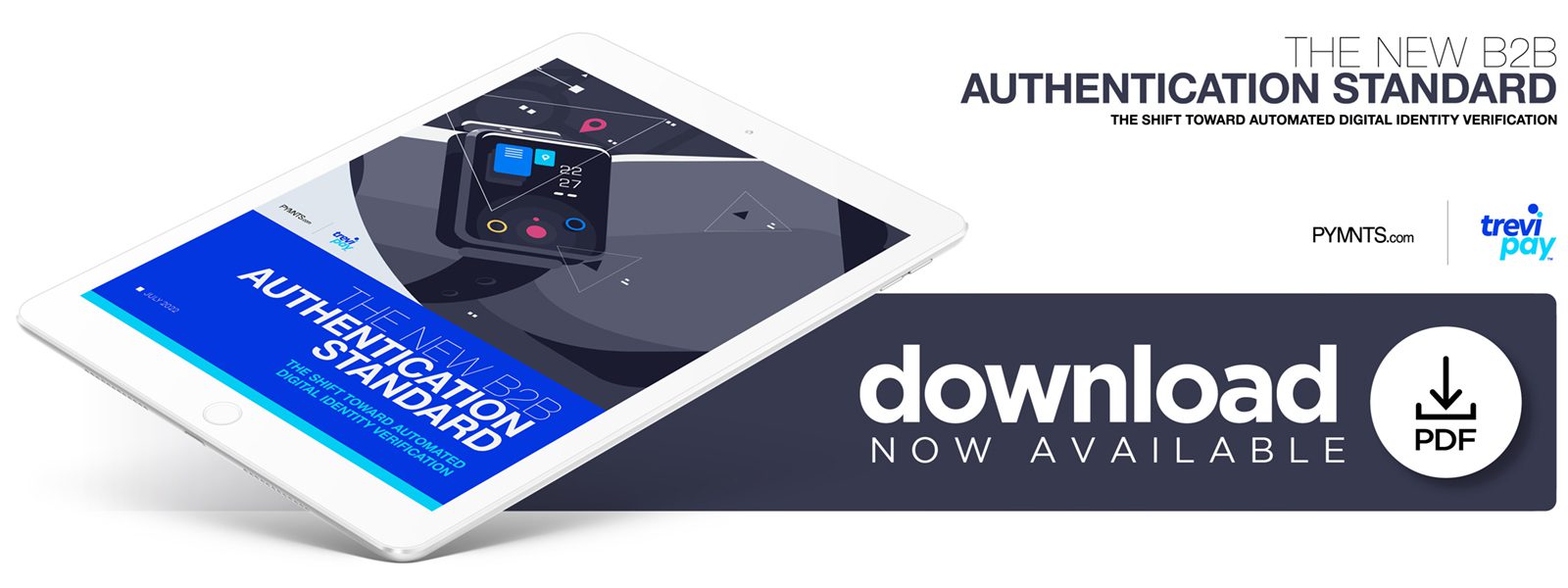Study Finds Half of Retailers Turned Away New Business Customers Over KYB

Proving and authenticating an organization’s digital identity is one of the biggest struggles for companies mitigating business-to-business (B2B) payments fraud. PYMNTS’ data finds that nearly half of firms surveyed, 49%, recognize that verifying new business customers’ identities is an important challenge they have to address, with 16% of these firms considering this to be the most important challenge they face.
Organizations that implemented proactive and automated anti-fraud solutions lost less revenue than average to fraud-related occurrences — just 2%. This means that automated, proactive digital identity verification solutions offer meaningful benefits for organizations seeking to improve their customer onboarding processes and mitigate B2B payments fraud.
This is just one of the findings revealed in “The New B2B Authentication Standard: The Shift Toward Automated Digital Identity Verification,” a PYMNTS and TreviPay collaboration. This report examines how U.S. businesses can implement proactive and automated anti-fraud solutions to modernize B2B identity verification strategies and securely expand their businesses.
More key findings from the study include:
 • Failure to verify whether a business is legitimate or not is a leading source of revenue loss, according to our data, with small businesses suffering greater losses in sales income. Much of these losses can be attributed to false positives — inaccurate fraud warnings that can affect legitimate business opportunities. Organizations lose an average of 3.5% of annual sales to fraud-related concerns, with 1.6% lost due to failure to sell to legitimate businesses. Small businesses tend to lose greater shares of their annual sales due to fraud-related concerns: They average 5.1%, with 2.9% of sales lost to legitimate businesses. Firms using proactive and automated solutions reduce their share of lost sales to 2.3%, with 1.1% due to halted legitimate sales.
• Failure to verify whether a business is legitimate or not is a leading source of revenue loss, according to our data, with small businesses suffering greater losses in sales income. Much of these losses can be attributed to false positives — inaccurate fraud warnings that can affect legitimate business opportunities. Organizations lose an average of 3.5% of annual sales to fraud-related concerns, with 1.6% lost due to failure to sell to legitimate businesses. Small businesses tend to lose greater shares of their annual sales due to fraud-related concerns: They average 5.1%, with 2.9% of sales lost to legitimate businesses. Firms using proactive and automated solutions reduce their share of lost sales to 2.3%, with 1.1% due to halted legitimate sales.
• Companies may offer customers various B2B payment options, such as invoicing and paying on terms, yet they also heavily rely on card verification to validate customer transactions. As a result, B2B revenue losses due to fraud often involve identity-related crimes or an inability to adequately monitor identity. PYMNTS’ research finds that card verification is the leading method of digital identity verification when engaging with new business customers online, yet companies using proactive and automated anti-fraud solutions rely on more methods than other organizations.  We found that 73% of firms apply card verification to verify digital identity and prevent fraud when doing business online, and 53% consider this the method on which they rely the most for digital identity and fraud prevention.
We found that 73% of firms apply card verification to verify digital identity and prevent fraud when doing business online, and 53% consider this the method on which they rely the most for digital identity and fraud prevention.
• Two-thirds of organizations are moderately or not at all satisfied with their current digital solutions for identity verification and fraud prevention, yet those with automated solutions experience the greatest satisfaction. While just 32% of organizations are very or extremely satisfied with the identity verification and fraud prevention solutions they currently implement, approximately 50% of organizations that implement automated solutions for digital identity verification and fraud prevention are very or extremely satisfied with their current solutions. Just 18% of organizations with manual solutions are very or extremely satisfied with their current solutions.
To learn more about identity verification and fraud prevention in B2B payments, download the report.
For all PYMNTS B2B coverage, subscribe to the daily B2B Newsletter.
